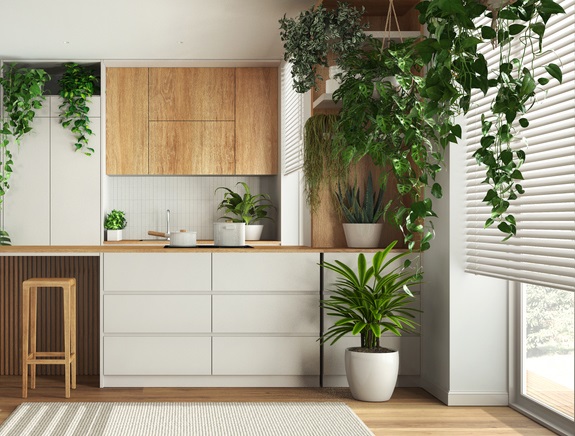Staying Ahead of Trends: Biophilic Design
Reading time: 4 minutes
What is biophilic design?
The name of this concept comes from the Latin term biophilia, which means ‘love for nature’.
When it comes to construction, this refers to the idea of establishing a sense of harmony between a building design and the world outside the site’s walls.
The late social ecologist Stephen Kellert, a well-respected professor at the Yale School of Forestry & Environmental Studies who assisted in pioneering the theory of biophilia, aimed to better establish the ties of building design with nature by creating the six elements associated with biophilic design.
These six elements are as follows:
1. Environmental features – this design element refers to parts of the natural world often found in the built environment, such as sunlight, the use of natural materials and plants.
2. Natural shapes – looking at the forms, patterns and lines which occur naturally in nature, such as with arches, water paths and vegetation.
3. Natural patterns and processes – this element puts the focus on how incorporating properties in nature improve the built environment; for example, how the quality of natural material will change over time.
4. Light and space – this details the many ways that light and space can be added into a space effectively.
5. Place-based relationships – establishes that a space must have an emotional connection with someone so that a protective sense of territorial control can be created.
6. Human-nature relationships – focusing in on a person’s relationship with nature, before establishing how this connection can be reflected within the built environment.
These biophilic design principles are now slowly making their way over to the UK and are increasingly being incorporated into buildings and spaces to improve well-being and connect people with nature.
Bring all of these design elements together into a building design project and, according to various studies, you will be able to create an environment that promotes calmness, enhances creativity, has improved air quality and is set up to reduce stress by those who occupy the space.
How to use biophilic design in your next building project
Now that you know what is meant by biophilic design, here are just a few ways that you can start applying the concept when carrying out building work:
Choose natural materials wherever possible
Building materials which are like the patterns and textures found in nature will be great for creating an organic indoor environment.
Timber and other types of wood can be used for a wide variety of building construction projects, as can stone designs.
Find ways to bring more natural light into a room
Spaces inside a building that is incorporating a biophilic design should receive plenty of natural daylight.
Plan to have windows and skylights positioned so that they brighten up a room with natural light for most of the day.
Reflective surfaces can also be positioned and used effectively to direct sunlight across a wider area.

Make outdoor spaces inviting
With nature the focus of the biophilic design concept, you should be looking to encourage people to step out into the outdoor space around a building as much as possible.
Connect interior and exterior living areas effortlessly with the installation of large, glass sliding doors, as well as making a garden inviting with features such as an aesthetically pleasing patio, courtyard or rooftop garden.
Establish views of nature
While this step may not be possible when working on all properties, you should aim to have a building’s architecture taking full advantage of the natural surroundings as much as you can.
If a building looks out onto a lake, river, meadows or wooded area, make sure people can look out onto these wonderful sights of nature uninterrupted when they are relaxing in their sitting rooms by fitting large picture windows.
Ensure you are keeping ahead of the trends that can improve how you carry out your work by regularly browsing through the handy advice and inspirational how-to guides featured throughout our comprehensive Trade Corner hub.




